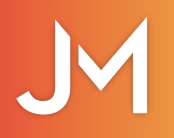Webinar Marketing For Financial Advisors – A Step-By-Step Guide On Building A Highly Profitable Financial Advisor Webinar
Masterclass webinars are the secret weapon in every financial advisor’s arsenal, turning curious prospects into loyal clients. In this guide, we’ll walk you through crafting a webinar that not only showcases your expertise but also builds trust and drives conversions.
Ready to dive in?
Let’s make your next webinar a world-class masterclass.
Step 1: Define Your Purpose and Audience

Firstly, before you even think about PowerPoint slides, get clear on your why and who. Your first task is to be crystal clear about why you’re hosting this webinar and who exactly you’re talking to.
- Are you educating retirees on managing wealth?
- Helping young professionals with investment strategies?
Tailor your webinar to address the specific needs of your audience. The more targeted, the better. It’s easy to get lost in the excitement of sharing your knowledge, but without a defined purpose, your message could end up too broad or diluted.
Why Purpose Matters
The purpose is the backbone of your webinar. Each goal requires a different approach.
- Are you trying to generate leads?
- Nurture existing clients?
- Position yourself as an expert in a niche market?
For instance, if you’re aiming to educate potential clients on retirement planning, your content needs to be more detailed and data-driven. On the other hand, if your goal is to build rapport, you might focus on storytelling and relatable anecdotes.
Identifying Your Audience
Once your purpose is clear, the next step is to identify your audience.
- Who are they?
- What are their pain points?
Understanding your audience allows you to tailor your content directly to their needs.
For example, if your audience is high-net-worth individuals, they’re likely more interested in tax optimization and estate planning rather than basic budgeting tips.
Research their demographics, behaviour, and preferences. You might even consider creating personas to better visualize who you’re speaking to.
Aligning Content with Audience Needs
The sweet spot for any successful webinar is where your purpose aligns with your audience’s needs.
For example, if you’re addressing young professionals, topics like “Smart Investment Strategies in Your 30s” could hit the mark. Always ask yourself:
- What’s in it for them?
- What will make them not just attend, but stay engaged and take action afterward?
Step 2: Choose the Right Topic

Now that you’ve defined your purpose and audience, it’s time to choose a topic that resonates. The topic is the bait that gets people to register, so it needs to be compelling. Your topic should hit a sweet spot between what you’re passionate about and what your audience cares about.
Think of it as your webinar’s headline—make it irresistible! Consider topics like “Retirement Planning in Uncertain Times” or “Top Investment Strategies for 2024.”
Brainstorming Topics
Start by listing potential topics that align with your expertise and your audience’s interests. Consider the questions clients ask you most often.
What are the hot topics in financial news that everyone’s talking about?
Look at industry trends, common pain points, and emerging issues. Your topic should be timely and relevant, offering something new or a fresh perspective on a well-worn subject.
Testing Topic Ideas
Once you have a list of potential topics, test them out. You could run a poll on LinkedIn/IG/Facebook/YouTube or send out a survey to your email list to gauge interest.
This not only helps you choose a winning topic but also engages your audience early on. They’ll feel involved and more likely to attend when the webinar rolls out.
Crafting a Catchy Title
Your topic might be gold, but without a catchy title, it might not attract the attention it deserves. Your title should be specific, promising a clear benefit or solution.
For example, instead of “Retirement Planning,” go for something like “10 Mistakes to Avoid When Planning for Retirement in 2024.”
The more specific and results-oriented, the better. This specificity also helps set clear expectations, ensuring that the audience knows exactly what they’ll gain by attending.
Step 3: Craft a Compelling Script

With your topic locked down, it’s time to write the script. Think of your script as your roadmap—it guides you through the webinar, ensuring you hit all the key points without veering off course.
This isn’t the time to wing it. Your script should be a blend of valuable insights, relatable stories, testimonials and clear calls to action.
Start with a strong hook, something that grabs attention and makes them want to stay. Keep the pace brisk and engaging, like a TED Talk for financial planning, investing and wealth management.
Structuring Your Script
Start with an outline. Break your webinar down into three main sections: the introduction, the core content, and the conclusion.
Your introduction should grab attention, think of it as your elevator pitch. Then, dive into the core content, where you’ll deliver the meat and potatoes of your message.
End with a strong conclusion that summarizes the key takeaways and includes a clear call to action.
Incorporating Storytelling
People connect with stories, not just data. Weave in personal anecdotes, client success stories, or hypothetical scenarios that illustrate your points.
For instance, if you’re talking about the importance of diversification, share a painful story. Make it about one of your clients’ past non-diversified portfolio in a market downturn BEFORE he joined your team as a client.
Afterwards, share a story about a client who benefited from a diversified portfolio during a market downturn.
Stories make your content more relatable and memorable.
Balancing Information with Engagement
Your script should strike a balance between being informative and engaging. Avoid jargon or overly complex explanations that might alienate your audience. Keep your language simple and conversational, as if you’re explaining concepts to a friend over coffee.
Use rhetorical questions, humor, and analogies to keep the audience engaged. Remember, a webinar is a two-way conversation (if it’s recorded LIVE), plan for moments where you can ask questions, run polls, or invite comments.
You always have the option to pre-record a webinar, and have it run to your audience as often as you want (daily, weekly, etc.). This is personally my preferred method, as it’s way more time efficient and you’re not at risk of any variables coming into play. Variables like bad wifi, bullying in the chat, distractions, stumbling on my own words, technology glitch, etc.
When it’s pre-recorded, you have the option of editing the recording of your webinar as you see fit. Afterwards, you host it on your favourite video platform like YouTube, Vimeo, etc. Lastly, leverage an all-in-one webinar hosting platform like Webinar Jam (Live webinar) or Everwebinar (Pre-recorded webinar).
These two platforms offer registration pages, landing pages, basic email integration, webinar analytics and much more. Highly recommend using one of these tools if you’re marketing with webinars.
Step 4: Design Engaging Slides

Nobody wants to stare at a wall of text.
Your slides are the visual representation of your script, and they play a crucial role in keeping your audience engaged.
Use visuals to reinforce your points including: charts, graphs, and images that make your data pop. Remember, your slides are a support tool, not the star of the show. Keep them clean, simple, and visually appealing.
Less is More
When it comes to slides, simplicity is key. Avoid cluttering your slides with too much text. Instead, use bullet points to highlight key ideas, and rely on visuals like charts, graphs and images to convey your message.
Each slide should have a single purpose, whether it’s to explain a concept, support a statement, or provide an example.
Visual Hierarchy
Design your slides with a clear visual hierarchy. Important information should stand out. Use larger fonts, bold text, or contrasting colors to draw attention.
Consider the flow of your slides; each one should naturally lead into the next, creating a cohesive narrative.
Using Visuals Effectively
Visuals should reinforce your message, not distract from it. Use high-quality images and diagrams that are relevant to the content.
For financial webinars, graphs and charts can be particularly effective in illustrating data points.
For example, if discussing historical market trends, a well-designed graph can quickly convey complex information that would be cumbersome to explain verbally.
Brand Consistency
Ensure your slides are consistent with your brand. Use your brand’s colors, fonts, and logo to create a professional and cohesive look. This not only reinforces your brand identity but also adds a layer of professionalism to your webinar.
Step 5: Practice, Practice, And Practice Some More

Even the most well-prepared webinar can fall flat without sufficient practice. The goal is to deliver your content smoothly and confidently, so your audience focuses on the message rather than any hiccups in delivery.
Run through your webinar multiple times. Get comfortable with the material, the technology, and the flow. Record a practice session and critique yourself like a stern coach. The goal is to be as smooth and confident as if you’ve done this a hundred times.
Rehearse Your Script
Start by reading your script out loud. This helps you identify any awkward phrasing or sections that might need refining. As you practice, time yourself to ensure you’re staying within your allotted time frame.
Remember, it’s better to run slightly under time than to rush through your content at the end.
Familiarize Yourself with the Technology
Practice using the webinar platform’s tools, such as screen sharing, polls, and Q&A features (if you’re running LIVE webinars). Do a few dry runs to ensure you know how to navigate the platform smoothly.
Technical issues can derail a webinar quickly, so the more familiar you are with the tech, the more confident you’ll be during the live session.
Get Feedback
If possible, practice in front of a colleague or friend who can give you feedback. They can point out areas where you might need to slow down, clarify points, or engage more with the audience.
Constructive criticism is invaluable for refining your delivery.
Plan for the Unexpected
No matter how much you practice, something unexpected can always happen. Whether it’s a technical glitch or an off-the-cuff question from the audience. Some of these unexpected scenarios can be avoided if you choose to pre-record a webinar.
Prepare for these situations by having backup plans in place. Know how to troubleshoot common tech issues and have a few extra talking points ready in case you need to fill time.
Step 6: Promote Your Webinar

Promotion is critical. You can have the best webinar in the world, but it won’t matter if no one shows up.
Now that you’ve got a killer webinar, it’s time to get the word out. Leverage email marketing, social media, and even direct mail if it fits your audience.
Create a sense of urgency with limited-time offers or exclusive content for attendees. Make it clear why they can’t afford to miss this event.
Creating a Marketing Plan
Start by planning your promotion strategy at least a few weeks in advance. Use a mix of channels to reach your audience through email marketing, social media, paid ads and even direct mail if it fits your demographic.
Generate a series of teaser posts or emails that build anticipation, highlighting the key benefits of attending the webinar.
Need help in building a Marketing Plan? Check out our blog article on the Top 7 Lead Generation Tips on How To Build A Highly Successful Marketing Plan For Advisors.
Crafting Compelling Calls to Action
Your promotional materials should include clear, compelling calls to action. Whether it’s a “Learn More” button in an email or a “Save Your Spot” link on social media, make it easy for people to sign up.
Use urgency to drive action and mention that there are limited spaces or exclusive content available only to attendees.
Leveraging Social Proof
Display your testimonials, client reviews, credentials, earned awards, past attendee feedback, or speaker bios to build credibility and trust.
If you’ve hosted successful webinars before, share stats or quotes that highlight the value previous attendees received. Social proof can be a powerful motivator for potential attendees.
Engaging Partners and Influencers
If possible, partner with other businesses, influencers, or associations that cater to your target audience. They can help promote your webinar to their followers, expanding your reach.
Consider offering them upfront value or an incentive, such as a discount code or collaboration opportunities.
Step 7: Host with Confidence

The big day has arrived, and it’s time to deliver your webinar with confidence.
Engage with your audience through polls, Q&A sessions, and live chats (assuming it’s LIVE). If it’s pre-recorded, pretend you’re speaking to a specific person. Include a lot of “YOUs” throughout the presentation.
Setting the Tone
Start your webinar with a warm welcome. Introduce yourself and briefly outline what the audience can expect. This helps set the tone and gives attendees a roadmap for the session. Remember to smile and project energy. Your enthusiasm will be contagious.
Engaging Your Audience in LIVE webinars
Keep the session interactive by engaging with your audience throughout the webinar. Use polls to gauge opinions, invite questions during Q&A segments, and encourage comments in the chat. Interaction keeps attendees engaged and makes the experience more dynamic.
For example, you could start with a poll asking attendees about their biggest financial concerns, then tailor your content to address those concerns.
Handling Q&A Sessions
Be prepared to handle questions efficiently. If a question is too complex to answer on the spot, offer to follow up via email. For live Q&A, practice active listening, repeat the question to ensure everyone hears it, and provide a clear answer followed up by an example if it applies.
Step 8: Follow Up Like a Pro

Thank your audience for their time, send them a recording of the webinar, and provide additional resources. Most importantly, include a clear next step, whether it’s booking a consultation, signing up for your newsletter or both.
The webinar may be over, but the real work of converting your attendees into clients or loyal followers is just beginning.
A well-executed follow-up strategy is crucial to capitalizing on the momentum you’ve built during the event. This step is about reinforcing the connection with your audience, providing additional value, and guiding them toward the next steps in your sales funnel.
Immediate Post-Webinar Follow-Up
Start by sending a follow-up email to all attendees within 24 hours of the webinar. Timing is critical here; you want to stay top of mind while the content is still fresh.
Your email should thank them for attending, include a brief recap of the key points covered, and provide a link to the webinar recording. This is especially useful for those who might have missed part of the webinar or want to review the information at their own pace.
Provide Additional Resources
Attach or link to any supplementary materials you mentioned during the webinar, such as slides, eBooks, whitepapers, or checklists. Offering these resources positions you as a generous expert, willing to provide value beyond the initial event.
It also gives you another touchpoint to engage with your audience and drive them back to your content.
There’s an old saying, and it goes something like “You need a minimum of 7 interactions before a transaction takes place”. Undoubtedly, the same applies to your post-follow up strategy.
Next Steps and Calls to Action
Clearly outline the next steps you want your attendees to take. This could be booking a one-on-one consultation, signing up for a newsletter, or even enrolling in a more extensive course or program you offer.
Make your call to action (CTA) specific and compelling, don’t leave your audience wondering what to do next.
For instance, “Schedule a free 30-minute consultation to discuss your retirement plan” is far more effective than a generic “Contact us.”
Nurture Non-Attendees
Don’t forget about those who registered but didn’t attend. Send them a separate email expressing that you missed them at the webinar but still want to share the valuable information. Include a link to the recording and highlight what they missed.
You can also offer an incentive, such as a free resource or a discount on your services, to encourage them to engage with the content they initially showed interest in.
Segment and Personalize Your Follow-Up
Leverage the data collected during the webinar, such as poll responses, questions asked, or even the point at which attendees dropped off.
Use this information to segment your audience for more personalized follow-ups.
For example, if you ran a poll asking about investment interests and found a group particularly interested in real estate, you could send targeted content or offers specifically related to real estate investment.
Personalized follow-ups show that you understand and care about the individual needs of your audience, which can significantly increase engagement and conversion rates.
Drip Campaigns
Consider setting up an automated email drip campaign that continues to nurture leads over time. This could include a series of emails that dive deeper into the topics discussed during the webinar or introduce new related content.
Drip campaigns keep you in touch with your leads without overwhelming them, gently guiding them through your sales funnel. Best part is, it’s all automated once the foundation is built and put into place.
Leverage Social Media and Community Engagement
Your follow-up doesn’t have to be limited to emails. Use your social media channels to keep the conversation going and engaged with your brand. Post key takeaways, snippets from the webinar, or even testimonials from attendees.
Invite participants to join your community or follow your social media pages for more tips and resources. If you have a blog, consider writing a post that recaps the webinar and encourages readers to watch the recording.
Interactive Follow-Up
Consider hosting a live Q&A session on social media where attendees (and those who missed the webinar) can ask follow-up questions. This not only provides additional value but also increases your visibility and engagement on social platforms.
You can even create a dedicated hashtag for your webinar series to keep the content organized and easy to follow.
Measure, Analyze, and Optimize
Finally, it’s essential to measure the success of your follow-up efforts. Track key metrics such as open rates, click-through rates, and conversion rates from your emails.
Analyze which segments responded best to your follow-ups and which CTAs were most effective. Use this data to refine your future webinars and follow-up strategies.
Feedback Loop
Don’t hesitate to ask for feedback from your attendees. Send out a brief survey asking them what they liked about the webinar, what they would like to see improved, and what topics they are interested in for future webinars.
This not only provides you with valuable insights for your next event but also keeps your audience engaged by involving them in the content creation process.
Continuous Improvement
Use the feedback and data collected to continuously improve your webinar process. Every webinar is an opportunity to learn and refine your approach.
Maybe you find that a certain type of content resonates more with your audience, or that a different format leads to higher engagement.
By adopting a mindset of continuous improvement, you’ll ensure that each webinar you host is better than the last, leading to greater success over time.
Step 9: Automated Webinar Marketing Tools & Tech Stack

Let’s face it, automation rules the world. It’s time efficient and does all the heavy lifting for you. Here’s a webinar marketing tech stack for financial advisors that has been successful for almost a decade and continues to be today.
- Chat GPT for inspiration with writing, images, videos, ad & landing page copy, email sequences, and much more!
- Gencraft and Canva to for your A.I. image variations and A.I. art generator tool.
- Loom or Streamyard to record yourself presenting you webinar masterclass.
- WebinarJam/Everwebinar as your ALL-in-ONE webinar hosting tool. Includes landing pages, registration pages, pre- and post-webinar basic email sequencing, webinar analytics and much more. This tool comes highly recommended.
- Active Campaign for your post-webinar automated email sequencing and newsletter deliverability tool.
- Calendly as your prospect/lead calendar booking system.
- Trello or Pipedrive as your go-to CRM, to keep notes and diarize reminders for your pipeline of prospects. Salesforce is another option with much more robust features, includes a CRM and an email automation tool.
Final Thoughts
The follow-up phase is where your webinar can truly pay off. By engaging with your attendees thoughtfully and strategically, you can turn a one-time event into a powerful tool for ongoing relationship-building and lead generation.
Remember, the goal of a webinar isn’t just to deliver content but to create a lasting connection with your audience. With a solid follow-up strategy, you’ll not only retain the interest of your attendees but also convert them into loyal clients or customers, maximizing the ROI of your webinar efforts.
Need help crafting a world-class webinar? Want someone to do it with you or for you? Simply click the button below to schedule your consultation call in my calendar.
Thanks for reading!
